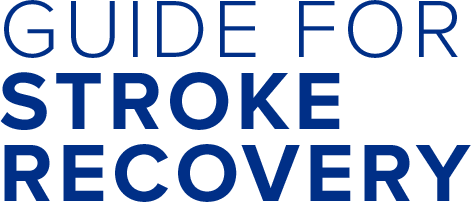Neuroplasticity, or brain plasticity, means that the brain can change. It can make new connections between brain cells after an injury like a stroke. The part of your brain that is healthy can take over the jobs of the injured part. This means that if you lost the ability to do something after the stroke, you can learn how to do it again.
Remember, change takes time. Keep practicing tasks every day to get better and help your brain make new connections. As the saying goes…use it or lose it!
A good comparison would be this example:
After her stroke, Rachel had a hard time speaking. She could say one or two words at a time and would often say the incorrect word. Rachel worked with the speech-language pathologist to learn ways to express herself more clearly. She is continuing to practice those skills and is now able to express herself more clearly using short sentences.
I learned that I would have to do a lot of work and my recovery would be as good as I worked at it. I was told to take every opportunity given to me, join every group I was invited to, do my home work every day, etc. I was encouraged to work hard.
Ten things you need to understand about neuroplasticity
1. Use it or lose it: The skills we don’t practice often get worse.
2. Use it and improve it: The skills we practice get better.
3. Specificity: We must practice the exact tasks we want to improve.
4. Repetition matters: We must do a task over and over again once we’ve got it right to actually change the brain.
5. Intensity matters: More repetitions in a shorter time are necessary for creating new connections in the brain.
6. Time matters: Neuroplasticity is a process not a single event. You can learn to create different skills at different times. In rehabilitation, starting earlier is usually better than starting later.
7. Practice what’s important: To change the brain, the skill we’re practicing must have some meaning, relevance, or importance to us.
8. Age matters: Younger brains tend to change faster than older brains, but improvement is possible at any age.
9. Transfer of skill: Practicing one skill can improve a related skill. For example, practicing going up and down the stairs can help manage curbs when crossing the street.
10. Avoid bad habits: Learning an “easier way” of doing something that develops a bad habit can make it harder to re-learn the proper way. So please try to learn tasks the right way the first time.
Adapted from Tactus Therapy
Here are some books that talk about neuroplasticity:
- Norman Doidge’s The Brain that Changes Itself (e-book and audiobook)
- Jill Bolte Taylor’s My Stroke of Insight (e-book and TED Talk)
- Mike Dow, David Dow, and Megan Sutton’s Healing the Broken Brain (book and audiobook)
